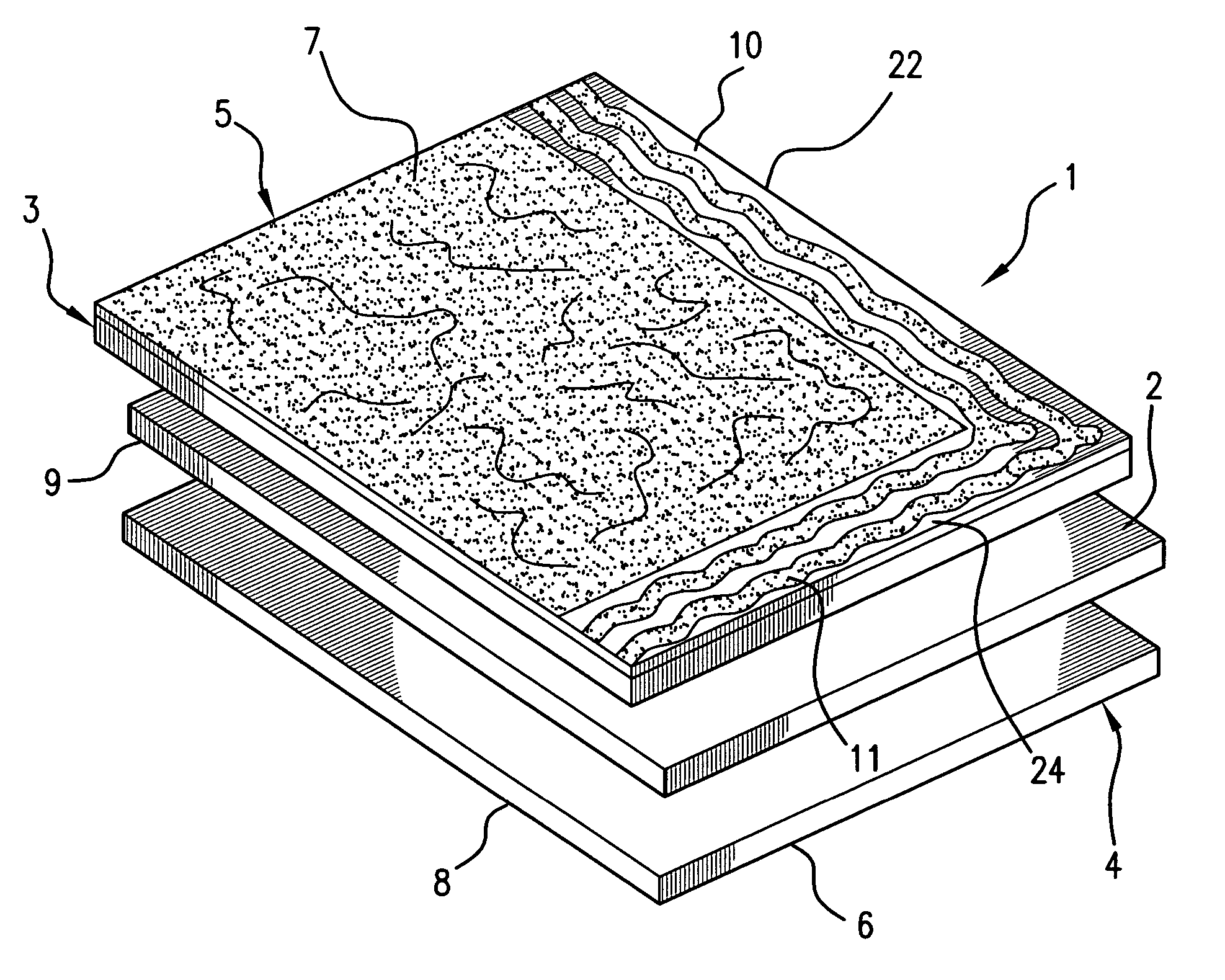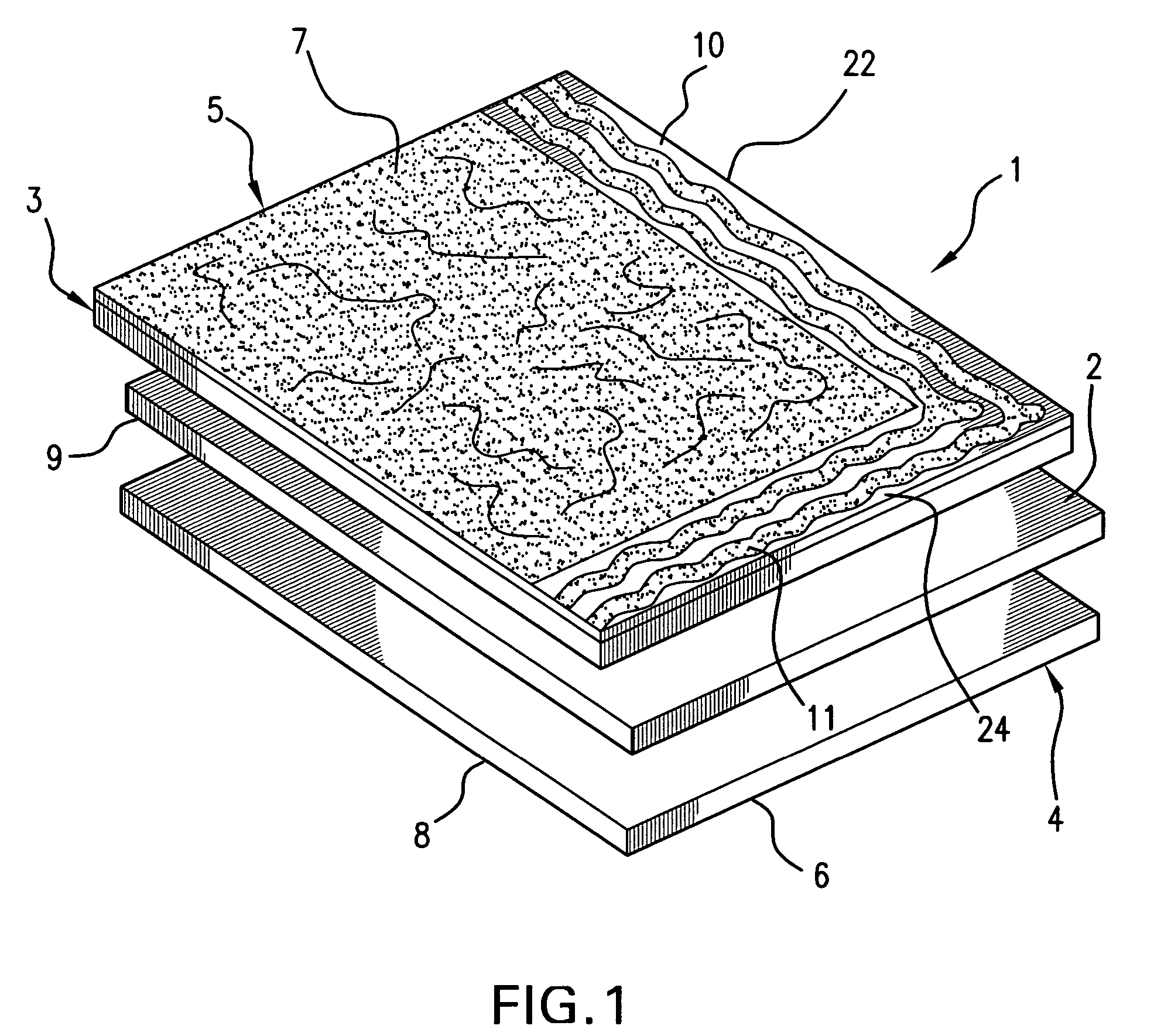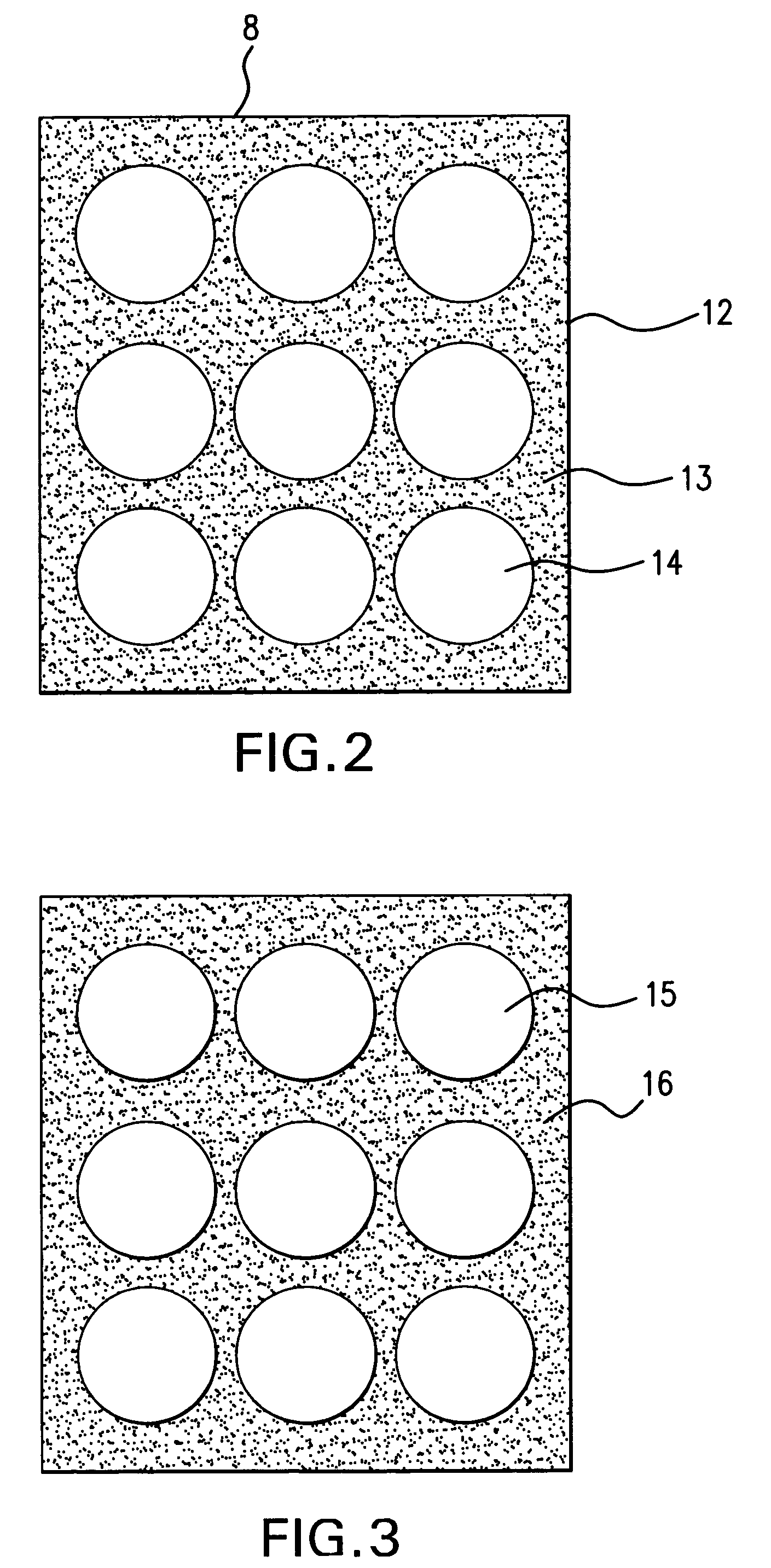Self-adhesive ventilating waterproofing membrane
a waterproofing membrane and self-adhesive technology, applied in the field of construction materials, can solve the problems of not including reinforcement, self-adhesive membranes, and ice dam protection, and achieve the effects of convenient and economical manufacture, improved workability, and improved pliableness
- Summary
- Abstract
- Description
- Claims
- Application Information
AI Technical Summary
Benefits of technology
Problems solved by technology
Method used
Image
Examples
Embodiment Construction
[0036]The invention will be illustrated and described in more detail with particular reference to the roofing materials shown in the accompanying figures. In one preferred embodiment, the ventilating roofing membrane is an APP dual compound composition constructed of a first APP modified bituminous layer on the front side of the carrier sheet and a second self-adhesive bituminous layer on the back side of the carrier sheet. The second bituminous layer is very adherent and provides excellent adhesion of the membrane to the underlying surface. As used herein, a self-adhesive bitumen compound or layer is a bitumen comprising tackifying resins, which render the bitumen sticky.
[0037]Referring now to the drawings, FIG. 1 illustrates one example of a self-adhesive modified bituminous ventilating roofing membrane in accordance with the present invention. The composite sheet 1 is made with modified bitumen coatings and a reinforcing carrier sheet 2. Specifically, composite sheet 1 includes a...
PUM
| Property | Measurement | Unit |
|---|---|---|
| freezing point | aaaaa | aaaaa |
| temperatures | aaaaa | aaaaa |
| temperatures | aaaaa | aaaaa |
Abstract
Description
Claims
Application Information
 Login to View More
Login to View More - R&D
- Intellectual Property
- Life Sciences
- Materials
- Tech Scout
- Unparalleled Data Quality
- Higher Quality Content
- 60% Fewer Hallucinations
Browse by: Latest US Patents, China's latest patents, Technical Efficacy Thesaurus, Application Domain, Technology Topic, Popular Technical Reports.
© 2025 PatSnap. All rights reserved.Legal|Privacy policy|Modern Slavery Act Transparency Statement|Sitemap|About US| Contact US: help@patsnap.com



